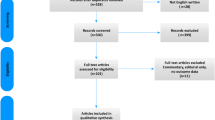Abstract
Purpose
To identify a threshold for intrarenal pressure (IRP), that if exceeded, will result in renal parenchymal damage. Herein, we attempt to identify an IRP threshold by subjecting in vivo porcine kidneys to various levels of extreme pressurized irrigation. Our objective was not to simulate ureteroscopy treatment, but to attempt identify a threshold of IRP injury.
Methods
Ten female pigs were intubated and sedated. The abdomen was opened; the ureters were isolated and incised. A LithoVue™ (Boston Scientific) ureteroscope was inserted. A 0-silk tie was then used to tie the ureter around the scope to create a closed system (to achieve a constant level of pressure). Real-time IRPs were measured using the Comet™ Pressure guidewire (Boston Scientific). Kidneys were exposed to pressurized, saline for 36 min (at control, 50, 100, 150 mmHg and higher pressures). Kidneys were then immediately harvested. Two expert histologists independently analyzed kidney slides to identify areas of renal damage.
Results
The two kidneys exposed to IRPs > 185 mmHg resulted in forniceal rupture and large areas of hematoma. The other IRP groups (control, 50, 100, and 150 mmHg) had no identifiable gross or histologic renal parenchymal damage.
Conclusions
No differences in renal parenchymal morphology were identified between pressure groups of control, 50, 100, or 150 mmHg. However, IRPs > 185 mmHg did result in forniceal rupture in this closed-system in vivo porcine model. Further study is required to elucidate the damage threshold.


Similar content being viewed by others
References
Dauw CA, Simeon L, Alruwaily AF, Sanguedolce F, Hollingsworth JM, Roberts WW, Faerber GJ, Wolf JS Jr, Ghani KR (2015) Contemporary practice patterns of flexible ureteroscopy for treating renal stones: results of a worldwide survey. J Endourol 29(11):1221–1230
Jung H, Osther PJ (2015) Intraluminal pressure profiles during flexible ureterorenoscopy. Springerplus 4:373
Noureldin YA, Kallidonis P, Ntasiotis P, Adamou C, Zazas E, Liatsikos EN (2019) The effect of irrigation power and ureteral access sheath diameter on the maximal intra-pelvic pressure during ureteroscopy: in vivo experimental study in a live anesthetized pig. J Endourol 33(9):725–729
Rehman J, Monga M, Landman J, Lee DI, Felfela T, Conradie MC, Srinivas R, Sundaram CP, Clayman RV (2003) Characterization of intrapelvic pressure during ureteropyeloscopy with ureteral access sheaths. Urology 61(4):713–718
Twum-Ampofo JSJ, Franco M, Eisner B (2020) The relationship between renal pelvis pressures and pyelovenous backflow during ureterorenoscopy in a live porcine model. J Urol 203:e714-715
Shao Y, Connors BA, Evan AP, Willis LR, Lifshitz DA, Lingeman JE (2003) Morphological changes induced in the pig kidney by extracorporeal shock wave lithotripsy: nephron injury. Anat Rec A 275:979–989
Humphreys MR, Shah OD, Monga M, Chang YH, Krambeck AE, Sur RL, Miller NL, Knudsen BE, Eisner BH, Matlaga BR et al (2018) Dusting versus basketing during ureteroscopy-which technique is more efficacious? A prospective multicenter trial from the EDGE research consortium. J Urol 199(5):1272–1276
Jakobsen JS, Holst U, Jakobsen P, Steen W, Mortensen J (2007) Local and systemic effects of endoluminal pelvic perfusion of isoproterenol: a dose response investigation in pigs. J Urol 177(5):1934–1938
Schwalb DMEM, Davidian M, Franco I (1993) Morphological and physiological changes in the urinary tract associated with ureteral dilation and ureteropyeloscopy: an experimental study. J Urol 149:1576–1585
Loftus C, Byrne M, Monga M (2021) High pressure endoscopic irrigation: impact on renal histology. Int Braz J Urol 47(2):350–356
Ceballos B, Nottingham CU, Bechis SK, Sur RL, Matlaga BR, Krambeck AE (2020) Critical assessment of single-use ureteroscopes in an in vivo porcine model. Adv Urol 2020:3842680
Elhilali MM, Badaan S, Ibrahim A, Andonian S (2017) Use of the moses technology to improve holmium laser lithotripsy outcomes: a preclinical study. J Endourol 31(6):598–604
Bechis S, Krambeck A, Sur R, Matlaga B (2019) MP79-09 critical assessment of single-use ureteroscopes in an in vivo porcine model. J Urol 201(Supplement 4):e1155–e1155
Funding
This work was supported by a grant from Boston Scientific.
Author information
Authors and Affiliations
Contributions
MSL, BAC, JCW, and AEK contributed to project development, data collection, data analysis, and manuscript writing/editing. DKA contributed to project development, data collection, and data analysis. MAA contributed to project development and manuscript writing/editing. TL contributed to project development, data collection, and manuscript writing/editing.
Corresponding author
Ethics declarations
Conflict of interest
Dr. Amy Krambeck is a consultant for Ambu, Boston Scientific, Lumenis, Karl Storz, and Virtuoso Surgical. She is a board member of Sonomotion.
Research involving animals
This research was approved by the Indiana University School of Medicine Institutional Animal Care and Use Committee.
Additional information
Publisher's Note
Springer Nature remains neutral with regard to jurisdictional claims in published maps and institutional affiliations.
Supplementary Information
Below is the link to the electronic supplementary material.
Rights and permissions
Springer Nature or its licensor holds exclusive rights to this article under a publishing agreement with the author(s) or other rightsholder(s); author self-archiving of the accepted manuscript version of this article is solely governed by the terms of such publishing agreement and applicable law.
About this article
Cite this article
Lee, M.S., Connors, B.A., Agarwal, D.K. et al. Determining the threshold of acute renal parenchymal damage for intrarenal pressure during flexible ureteroscopy using an in vivo pig model. World J Urol 40, 2675–2681 (2022). https://doi.org/10.1007/s00345-022-04154-5
Received:
Accepted:
Published:
Issue Date:
DOI: https://doi.org/10.1007/s00345-022-04154-5




